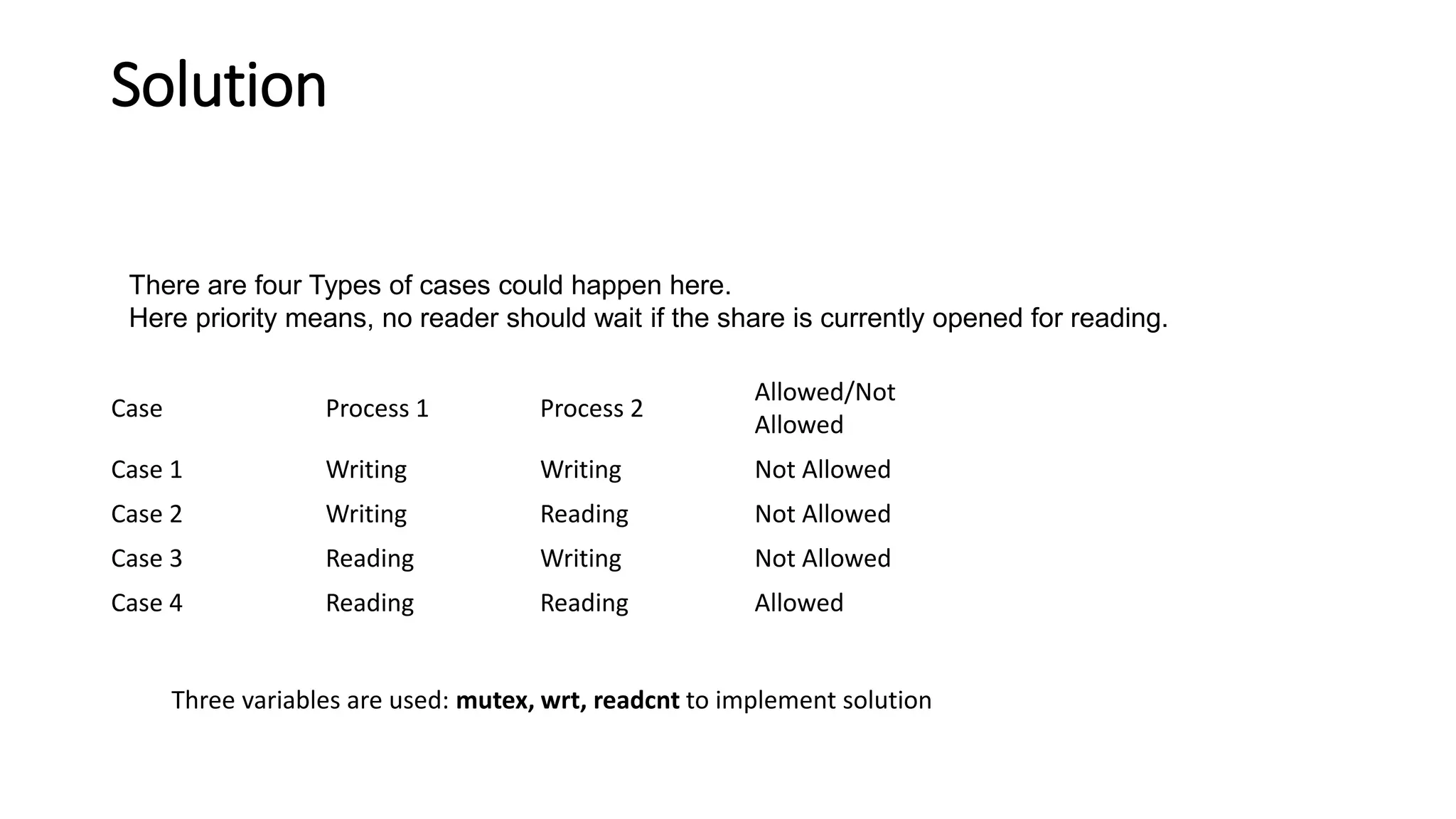The document discusses classical problems of synchronization in operating systems. It describes three classical synchronization problems: the bounded buffer problem, dining philosophers problem, and readers-writers problem. For each problem, it provides details on the problem description, potential solutions using semaphores or mutex locks, and examples of producer/consumer and reader/writer code. It also discusses potential issues like race conditions that can arise in solutions and defines what constitutes a deadlock.











![Semaphore Solution to Dining Philosopher –
Each philosopher is represented by the following pseudocode:
process P[i]
while true do
{
THINK;
PICKUP(CHOPSTICK[i], CHOPSTICK[i+1 mod 5]);
EAT;
PUTDOWN(CHOPSTICK[i], CHOPSTICK[i+1 mod 5])
}
There are three states of the philosopher: THINKING, HUNGRY, and EATING.
The dining philosopher demonstrates a large class of
concurrency control problems hence it's a classic
synchronization problem.](https://image.slidesharecdn.com/deadlockclassicproblems-230522103026-ccaf8ac5/75/Deadlock-_Classic-problems-pptx-12-2048.jpg)
![1. Suppose Philosopher P0 wants to eat, it will enter in Philosopher() function, and execute Wait( take_chopstickC[i] ); by doing
this it holds C0 chopstick and reduces semaphore C0 to 0, after that it execute Wait( take_chopstickC[(i+1) % 5] ); by doing this
it holds C1 chopstick( since i =0, therefore (0 + 1) % 5 = 1) and reduces semaphore C1 to 0
2. Similarly, suppose now Philosopher P1 wants to eat, it will enter in Philosopher() function, and execute Wait(
take_chopstickC[i] ); by doing this it will try to hold C1 chopstick but will not be able to do that, since the value of semaphore
C1 has already been set to 0 by philosopher P0, therefore it will enter into an infinite loop because of which philosopher P1 will
not be able to pick chopstick C1 whereas if Philosopher P2 wants to eat, it will enter in Philosopher() function, and execute
Wait( take_chopstickC[i] ); by doing this it holds C2 chopstick and reduces semaphore C2 to 0, after that, it executes Wait(
take_chopstickC[(i+1) % 5] ); by doing this it holds C3 chopstick( since i =2, therefore (2 + 1) % 5 = 3) and reduces semaphore C3
to 0.](https://image.slidesharecdn.com/deadlockclassicproblems-230522103026-ccaf8ac5/75/Deadlock-_Classic-problems-pptx-13-2048.jpg)





